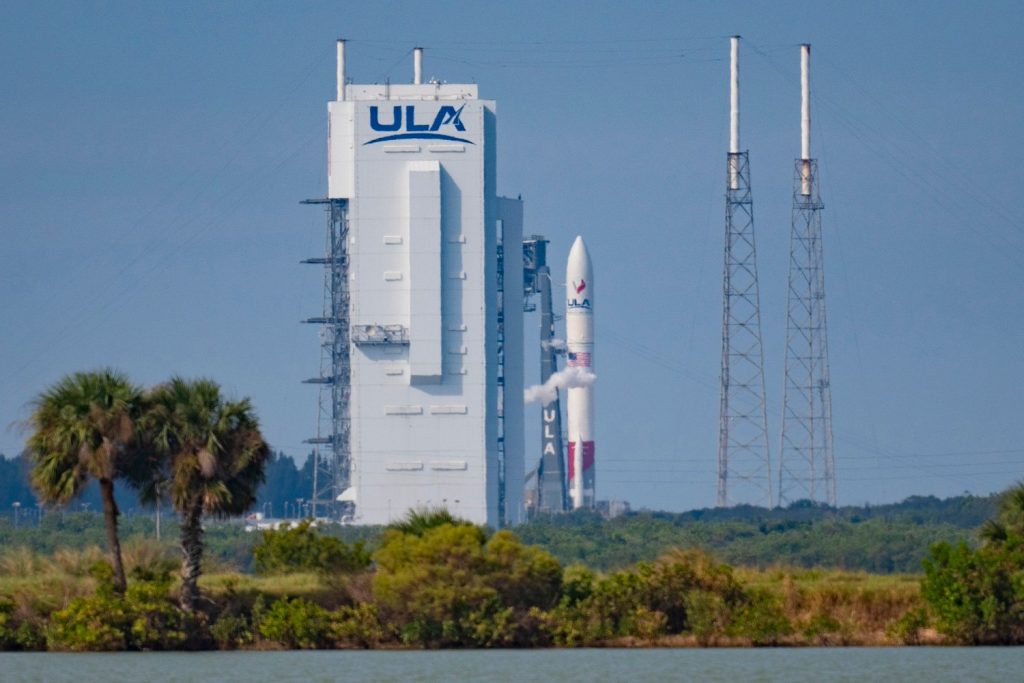United Launch Alliance (ULA) is ready to put its 200-foot Vulcan Centaur rocket to the test, proving that it can start sending military payloads to orbit and possibly compete with industry favorite SpaceX.
Vulcan Centaur is all set for liftoff from Florida’s Cape Canaveral on Friday during a three-hour window that opens at 6 a.m. ET. The Cert-2 mission is the rocket’s second certification flight and it is set to last for a little over 30 minutes; during this time, ULA will gather data to potentially secure approval for its rocket to start launching payloads for the U.S. military. You can watch the launch live at ULA’s website.
The mission was initially supposed to carry Sierra Space’s Dream Chaser spaceplane, but the experimental vehicle was not ready to take off just yet. Facing pressure by Vulcan’s packed schedule, ULA decided to launch its rocket with a mass simulator and other instruments, making data gathering the sole purpose of the Cert-2 mission.
“We had other customers that wanted to be on Cert-2 if we weren’t going to be able to fly Dream Chaser, but we waited so long that we couldn’t really get those integrated in time either,” ULA CEO Tory Bruno told reporters during a call on Wednesday, according to Payload. “That’s how interested we were in the Dream Chaser mission,” he added. The rocket’s first test flight in January launched Astrobotic’s Peregrine lander to the Moon.
Its first launch went off without a hitch, and ULA is hoping to repeat that success for a second time so that the U.S. Space Force can certify Vulcan for national security missions. The certification process will not be instant, and the Space Force will need some time to review the launch data before it grants its approval of the rocket, SpaceNews reported.
If it does succeed, ULA’s Vulcan is set to launch two U.S. national security payloads this year, and the company is aiming for a whopping 20 launches in 2025, half of which are reserved for Vulcan, Payload reported based on Bruno’s statements. Achieving those numbers is step towards competing with industry giant SpaceX, although ULA’s rockets are still not quite up to par.
Vulcan is a mostly expendable heavy-lift launch vehicle that was first conceived in 2006, borrowing design elements from both ULA’s Atlas V and Delta IV rockets. It is a highly versatile rocket, with the ability to deliver payloads to a wide range of orbital destinations, from low Earth orbit (LEO) and geosynchronous orbit (GEO) to lunar and deep space missions. ULA’s rocket can carry up to 25.8 metric tons to LEO and 7 metric tons to GEO. By comparison, SpaceX’s Falcon Heavy can lift up to 64 metric tons to LEO and 9 metric tons directly to GEO.
The Vulcan Centaur’s first stage is equipped with two BE-4 engines, each producing 550,000 pounds of thrust, using a combination of liquified natural gas (liquid methane) and liquid oxygen as propellants. ULA is hoping to be able to eventually recover and reuse the engines, but not the first stage itself.
Since there are no paying customers for the second mission, ULA is absorbing the full cost of the launch. “I’m pretty darn confident I’m going to have a good day on Friday. Knock on wood,” Bruno told reporters, according to Payload. “Having said that, what if I don’t?… If that were the case, then we’d fly again.” Gotta appreciate his honesty.
More: What to Know About the New Rocket Launching a Major Moon Mission on Monday

